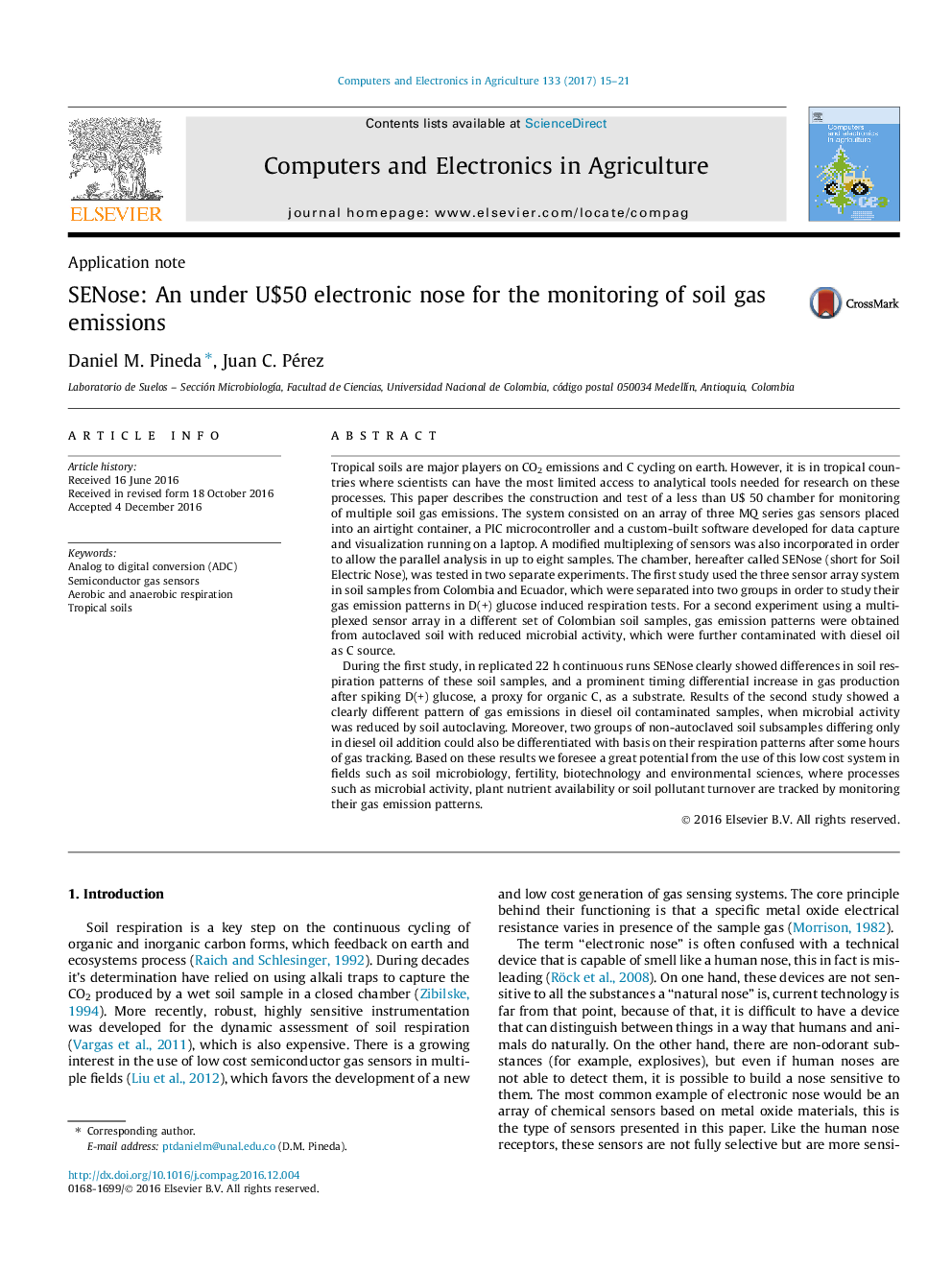| Article ID | Journal | Published Year | Pages | File Type |
|---|---|---|---|---|
| 4759115 | Computers and Electronics in Agriculture | 2017 | 7 Pages |
Abstract
During the first study, in replicated 22Â h continuous runs SENose clearly showed differences in soil respiration patterns of these soil samples, and a prominent timing differential increase in gas production after spiking D(+) glucose, a proxy for organic C, as a substrate. Results of the second study showed a clearly different pattern of gas emissions in diesel oil contaminated samples, when microbial activity was reduced by soil autoclaving. Moreover, two groups of non-autoclaved soil subsamples differing only in diesel oil addition could also be differentiated with basis on their respiration patterns after some hours of gas tracking. Based on these results we foresee a great potential from the use of this low cost system in fields such as soil microbiology, fertility, biotechnology and environmental sciences, where processes such as microbial activity, plant nutrient availability or soil pollutant turnover are tracked by monitoring their gas emission patterns.
Related Topics
Physical Sciences and Engineering
Computer Science
Computer Science Applications
Authors
Daniel M. Pineda, Juan C. Pérez,
